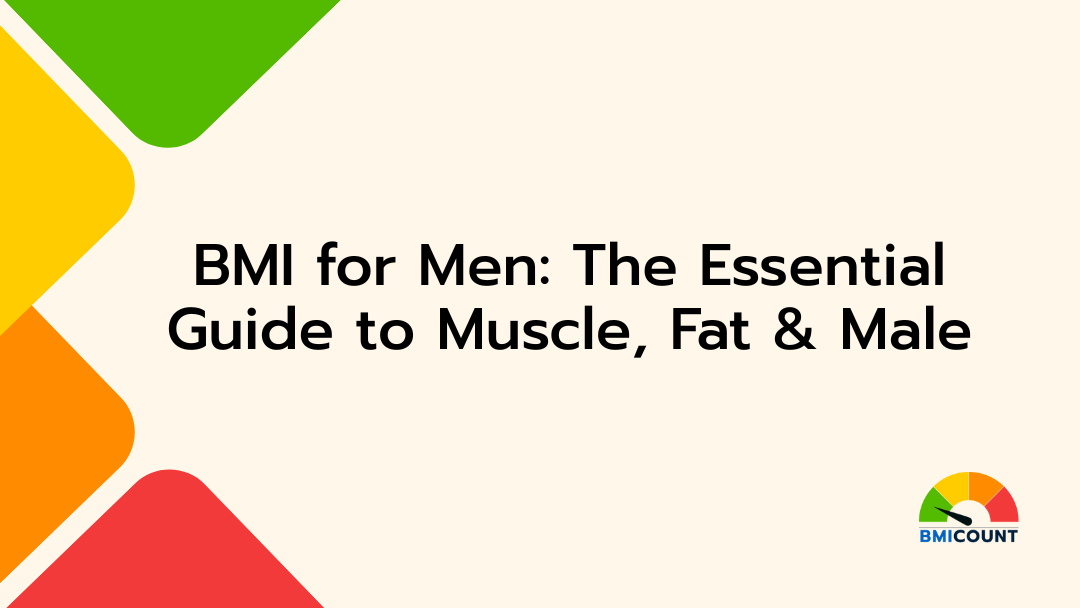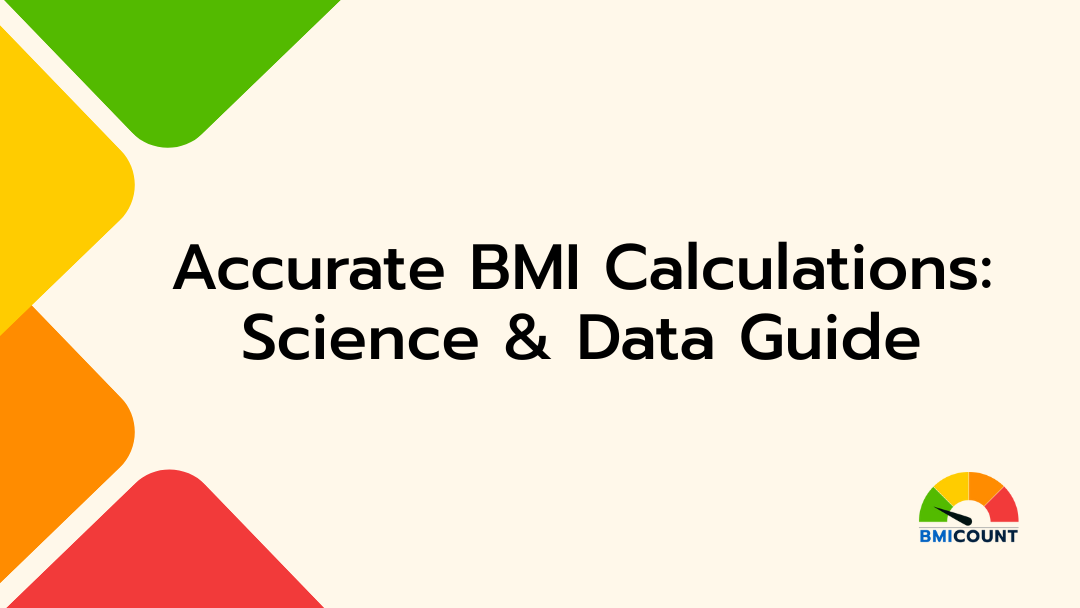Understanding BMI for Men
While the BMI formula is the same for everyone, interpreting BMI for men requires extra context. Men typically carry more muscle mass and have different body composition than women, which can lead to misleading BMI scores especially for those who are athletic or naturally muscular.
Start by checking your score with our free BMI Calculator, then learn how to read your results in the context of male physiology.
Understanding how BMI for men is influenced by muscle mass and fat distribution can help you make smarter health decisions. This guide explains what BMI means in a male context, highlights the difference between muscle and fat in BMI readings, and shows you how to use the results as a starting point not a verdict—for your health journey.
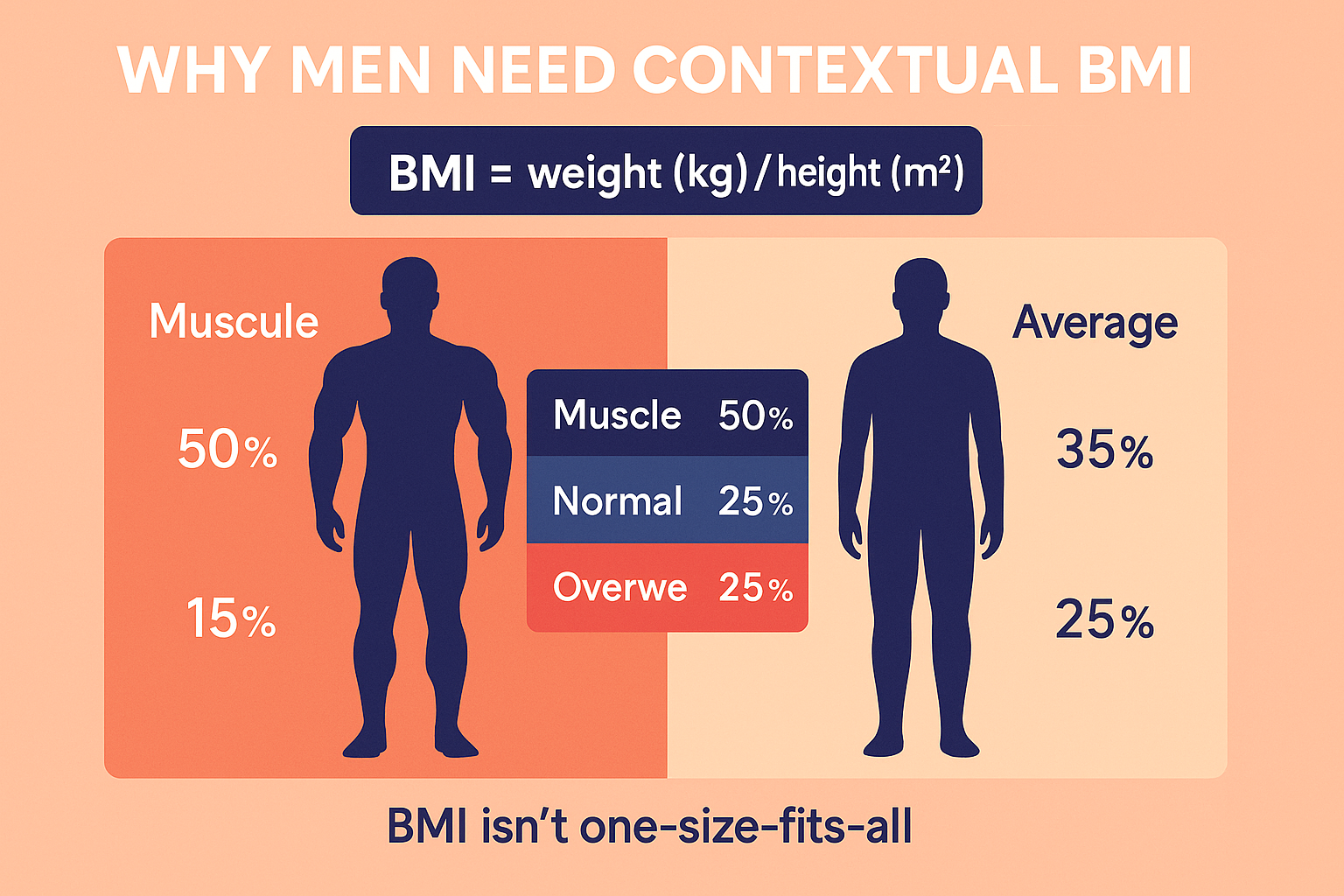
“BMI for men is more than just a number — it’s a reflection of muscle, fat, and body structure. The same BMI score can mean very different things.”
Male Body Composition – Men vs Women
Understanding the difference in body composition between men and women is essential for interpreting BMI for men accurately. While BMI uses the same calculation for all adults, it doesn’t account for the unique ways men store fat or build muscle.
Key Differences in Body Composition (Men vs Women)
| Factor | Men | Women |
|---|---|---|
| Muscle Mass | Typically higher; more lean tissue | Lower than men on average |
| Fat Distribution | More visceral fat (around organs) | More subcutaneous fat (under skin, hips, thighs) |
| Metabolism | Faster due to higher muscle content | Slightly slower, varies with hormones |
| Hormonal Influence | Testosterone promotes muscle development | Estrogen promotes fat storage |
| BMI Interpretation | May read “overweight” despite high fitness | More consistent with total fat levels |
Why It Matters for BMI Interpretation
- BMI doesn’t differentiate between muscle and fat
- Men with high muscle may appear “overweight” or “obese” by BMI alone
- This can lead to unnecessary concern or inaccurate health assumptions
Quick Takeaways for Men:
- Consider BMI as a starting point, not a diagnosis
- Look at waist circumference and body fat % alongside BMI
- Use BMI calculators designed for men for better accuracy
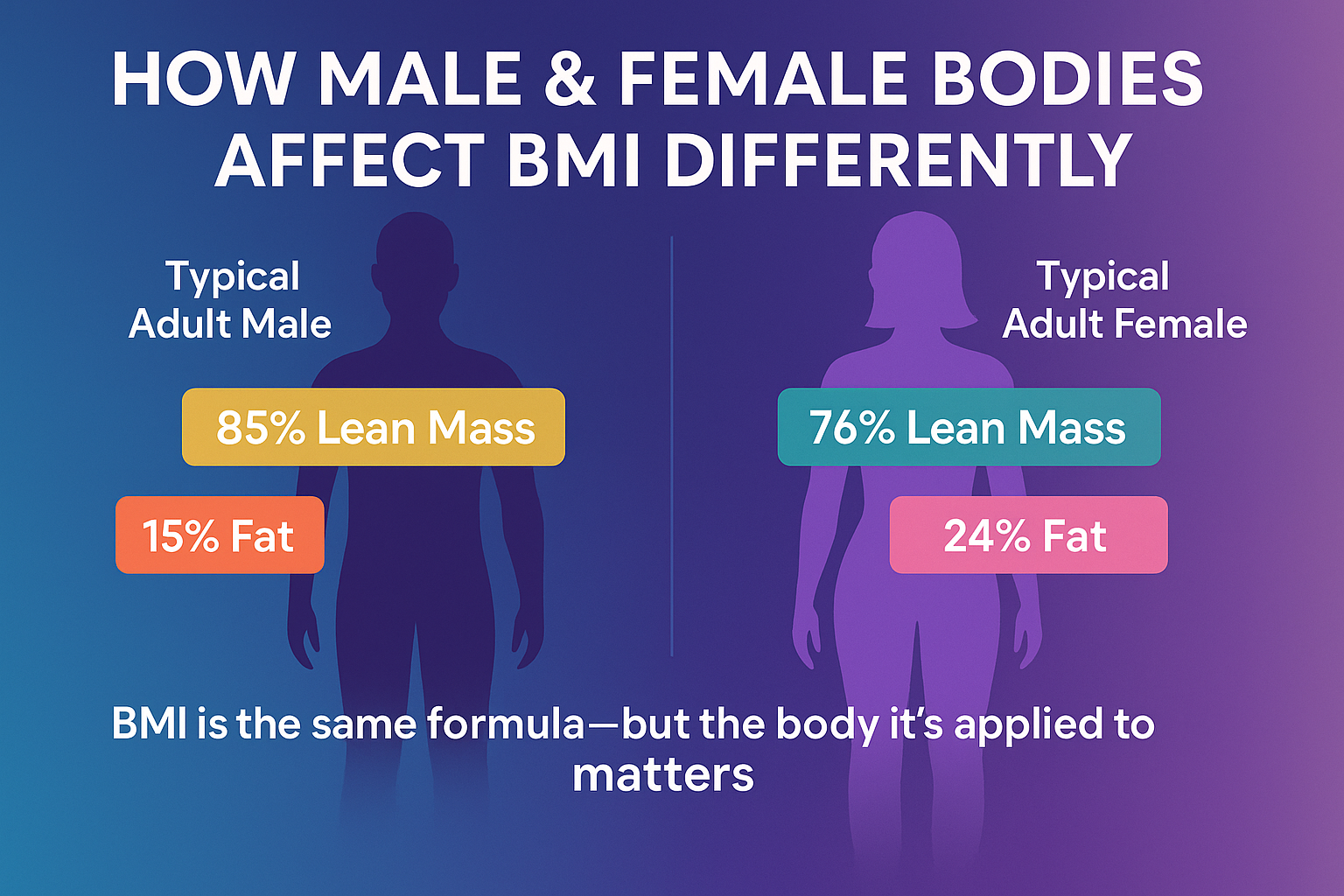
“Two people can have the same BMI — but if one is muscular and the other carries more fat, the health outcomes can be drastically different. That’s especially true for men.”
Male BMI Range – How It Compares
The standard BMI categories used worldwide apply equally to men and women. However, the way these ranges reflect health can differ based on body composition, especially for men who carry more muscle mass.
That’s why understanding the male BMI range in the right context is crucial especially if you’re using your BMI to guide fitness or lifestyle changes.
Standard BMI Categories vs Male Interpretation
| BMI Range | Category | Male-Specific Notes |
|---|---|---|
| Under 18.5 | Underweight | May indicate poor nutrition or muscle loss, especially in older men |
| 18.5 – 24.9 | Normal Weight | Healthy range, but doesn’t reflect body fat % or muscle mass |
| 25.0 – 29.9 | Overweight | Common in muscular men; not always an indicator of excess fat |
| 30.0 and above | Obese | Higher risk if accompanied by belly fat or low activity levels |
According to CDC guidelines, these ranges apply across populations but must be viewed with context.
What Makes BMI Interpretation Different for Men?
- Muscle adds weight without adding health risk
- Visceral fat (more common in men) poses a bigger health threat than subcutaneous fat
- Men may fall into the “overweight” category due to muscle mass, not body fat
Pro Tip: Use our BMI Calculator for Men to compare your BMI within male-specific physiological expectations.
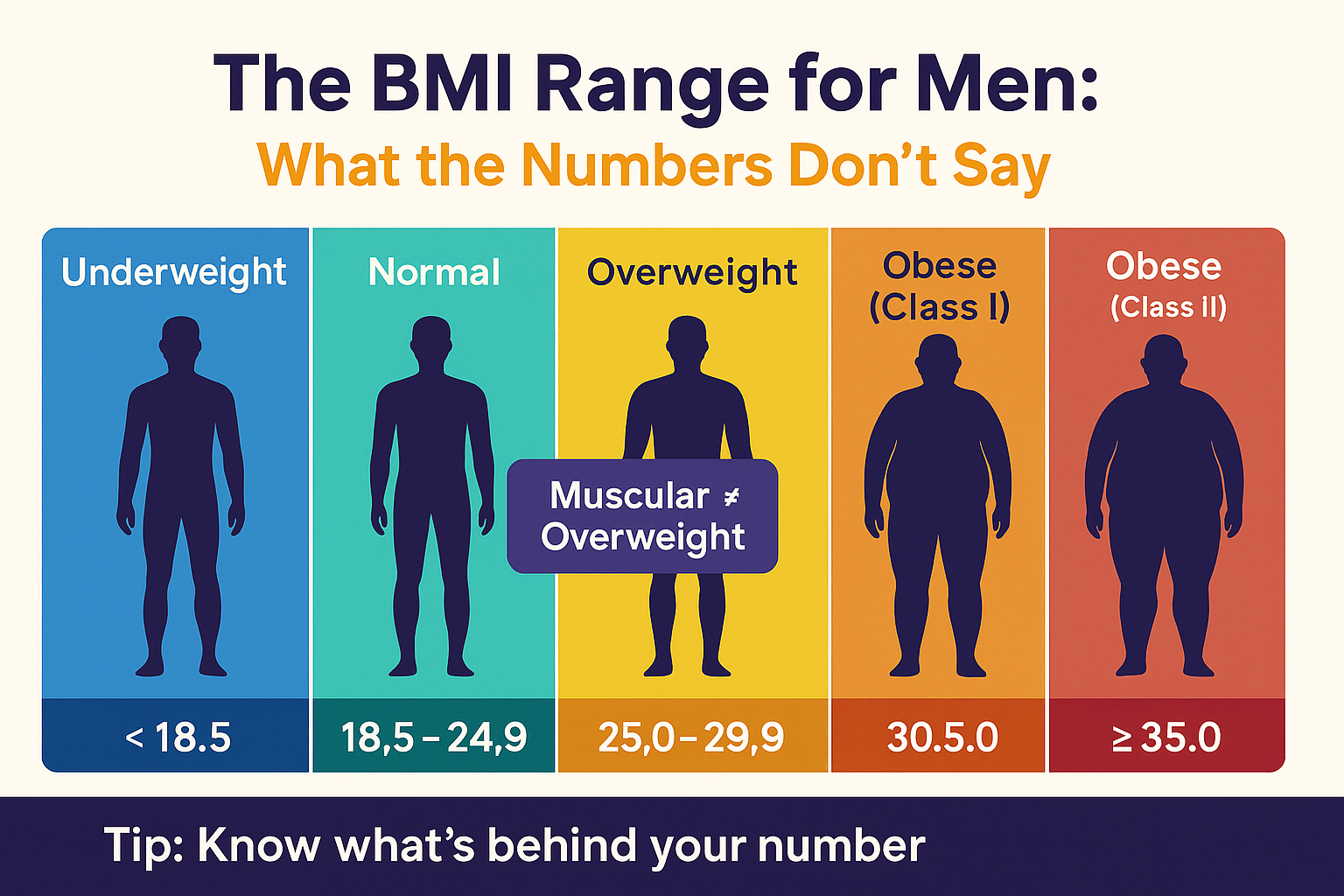
“The male BMI range may follow the same numbers, but its meaning changes depending on what makes up those numbers muscle, fat, or both.”
Average BMI for Men – What’s Considered Normal?
Understanding the average BMI for men helps you compare your number with population trends, but it’s important to remember: “average” doesn’t always mean “healthy.”
In many developed countries, the average male BMI falls into the overweight category largely due to sedentary lifestyles, poor diet, and increased fat retention, especially around the abdomen.
Global and U.S. Averages for Men
According to recent data from the CDC and WHO:
- In the United States, the average BMI for men is around 29, which borders the overweight and obese category.
- In Europe and Asia, average BMIs for men tend to range from 23 to 27, depending on lifestyle, diet, and genetics.
- Health professionals typically recommend men aim for a BMI of 21–24.9 for optimal long-term health — adjusted based on body composition.
Quick Comparison Table
| Region | Average BMI for Men | Category |
|---|---|---|
| United States | 29.1 | Overweight |
| United Kingdom | 27.6 | Overweight |
| Japan | 23.5 | Normal Weight |
| Australia | 27.9 | Overweight |
| Global Average | 24.9 | Normal-High |
Why It Matters:
- Being in the average range doesn’t mean your weight is ideal for health.
- Waist size, fat percentage, and muscle mass offer a more complete picture.
- Men with a BMI close to 30 should also assess lifestyle risks, not just the number.
Looking to understand how lifestyle affects BMI? Explore our full BMI and Lifestyle Guide.
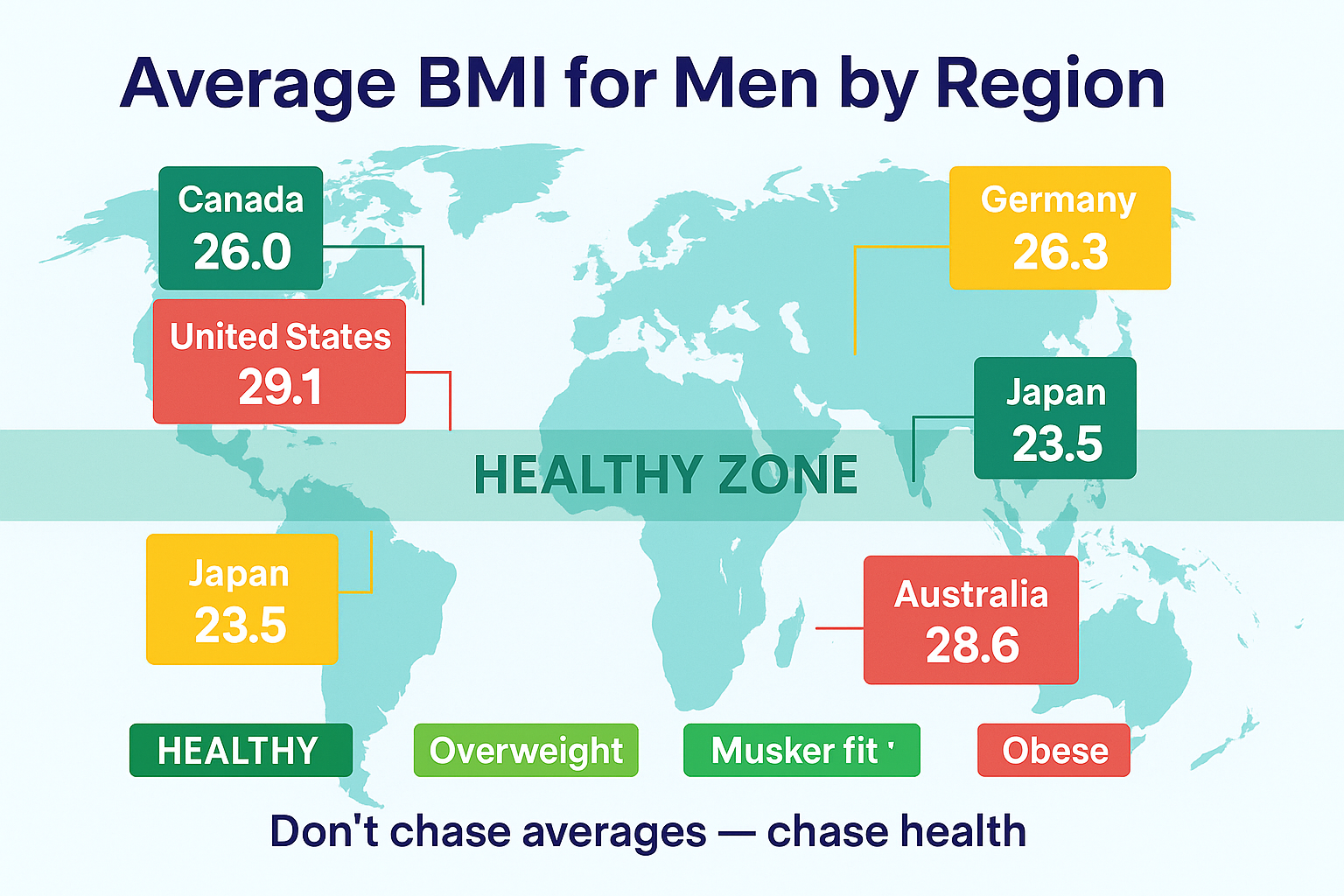
“The average BMI for men might be 29 in some countries, but that doesn’t make it healthy. Use the number as a signal, not a standard.”
Muscle Mass and BMI in Men – The Misleading Side
One of the biggest limitations of using BMI for men is that it doesn’t distinguish between muscle mass and body fat. This becomes a real issue for men who are athletic, work out regularly, or naturally have more lean mass. These individuals may receive a BMI reading in the “overweight” or even “obese” category — despite being in excellent shape.
Muscle vs. Fat at the Same BMI
| Profile | Weight | Height | BMI | Body Composition | Health Risk |
|---|---|---|---|---|---|
| Muscular Male Athlete | 190 lbs | 5’10” | 27.3 | ~12% body fat, high muscle | Low |
| Sedentary Male, Same BMI | 190 lbs | 5’10” | 27.3 | ~30% body fat, low muscle | High |
Even though both individuals have the same BMI, their actual health risks are drastically different. That’s why BMI for men should be interpreted alongside other metrics.
Better Alternatives or Complements to BMI:
- Waist circumference: Better for detecting visceral fat
- Body fat percentage: More direct than BMI
- Waist-to-hip ratio: Simple and effective screening tool
- Fitness level: VO2 max, endurance, strength matter too
Dive deeper into how BMI works (and where it falls short) in our Science & Data Behind BMI Calculations.
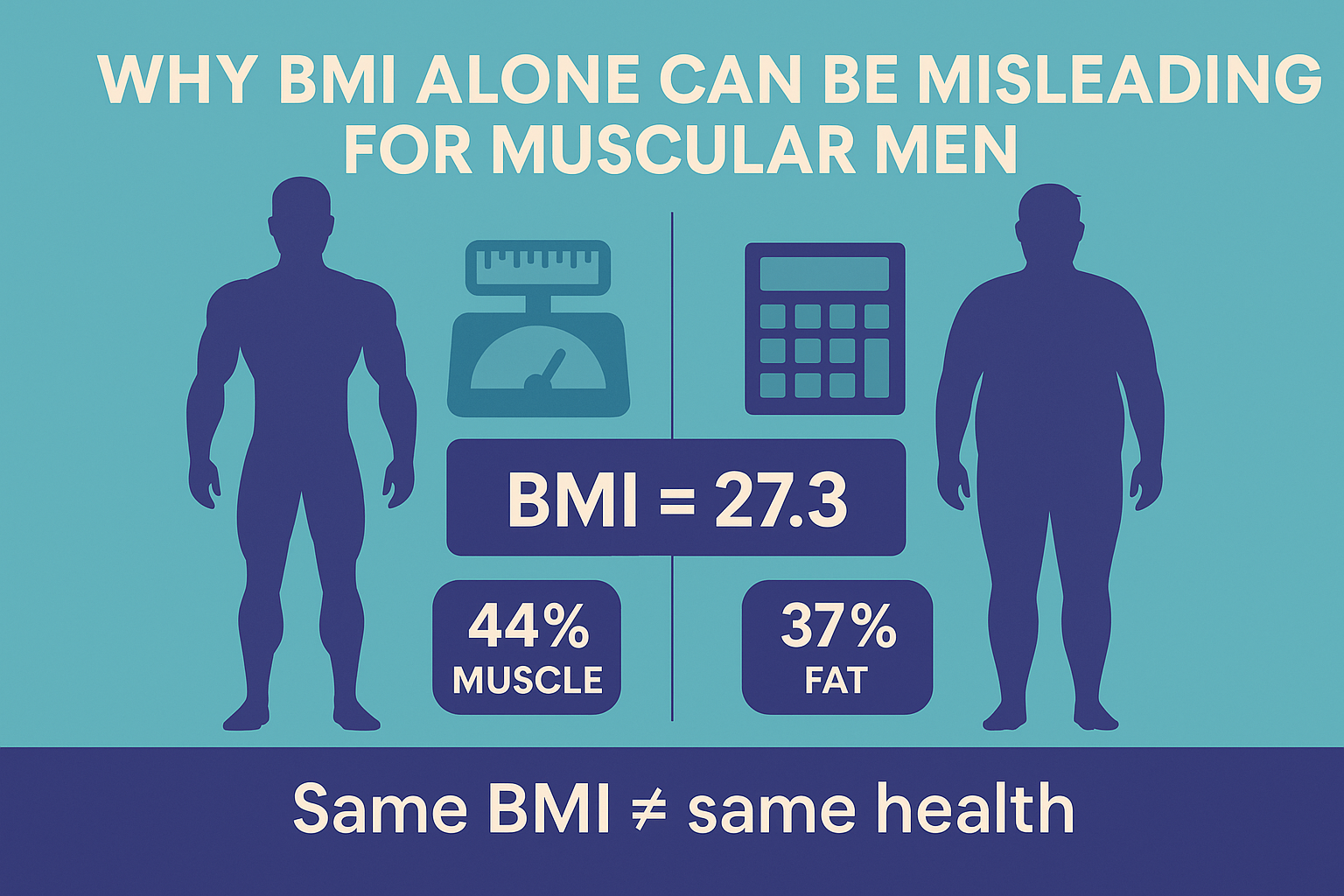
“Muscle weighs more than fat, and BMI doesn’t care. For active men, a ‘high’ BMI could reflect strength, not sickness.”
What Men Should Consider Beyond BMI
While BMI for men is a useful starting point, it shouldn’t be the only number guiding your health journey. Since BMI doesn’t account for muscle mass, bone density, or fat distribution, it’s important to take a broader approach when evaluating your physical well-being.
Health Metrics Men Should Track Alongside BMI
Here are more reliable indicators of health—especially useful if you’re muscular, active, or fall in the “overweight” BMI category:
- Waist circumference – Tracks abdominal fat, a major risk factor for heart disease
- Body fat percentage – Offers more precise insight into your composition
- Waist-to-hip ratio – Effective predictor of cardiovascular risk
- Resting heart rate – Lower is generally better in fit individuals
- Strength and endurance levels – True indicators of functional fitness
- Blood pressure and cholesterol – Must-know internal health markers
The Key Takeaway for Men:
Use BMI to start the conversation—but don’t stop there. Especially if you’re lean or athletic, your health may be far better than your BMI suggests.
Explore male-specific lifestyle strategies in our BMI and Lifestyle Guide.
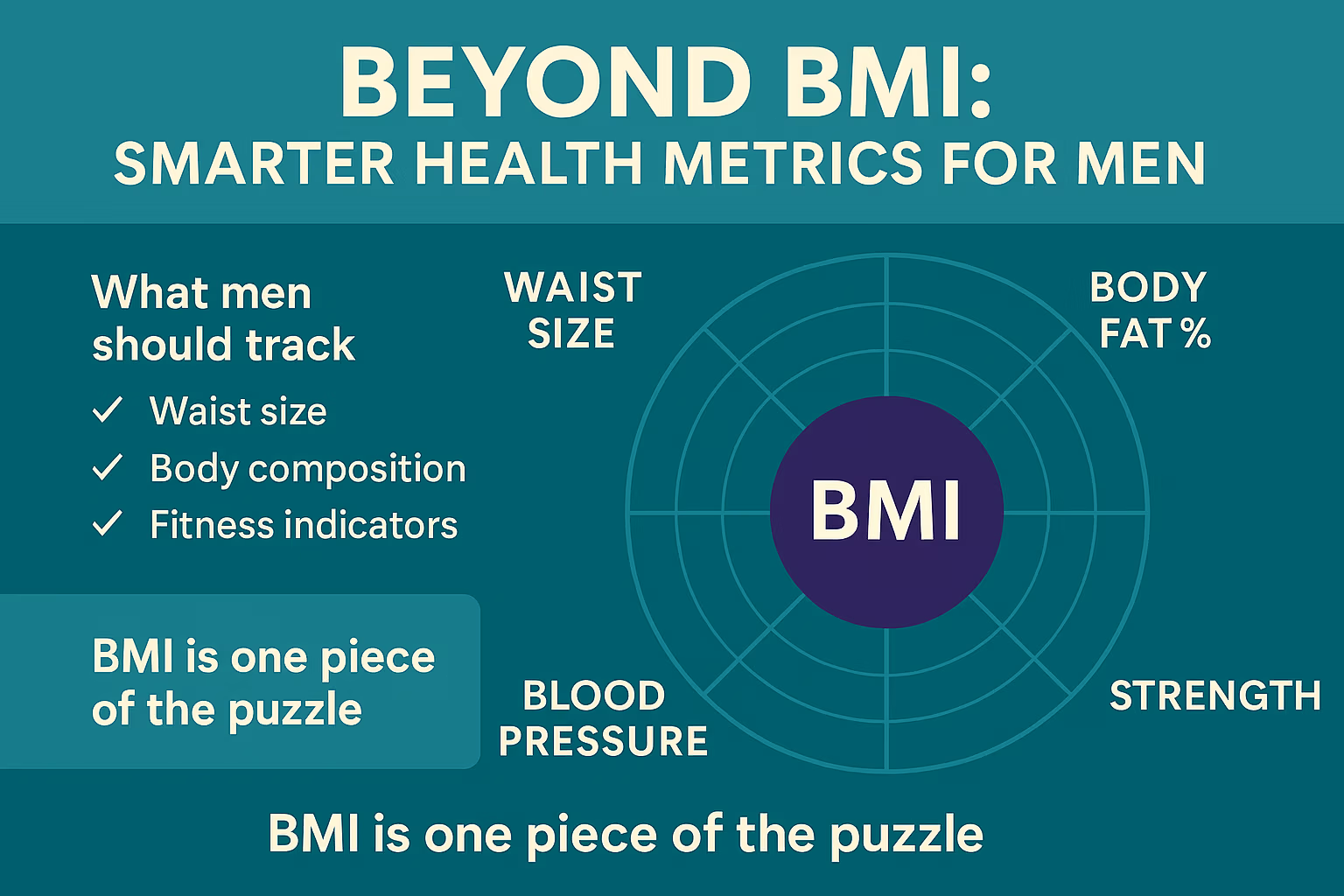
“Health isn’t defined by a single number. For men, it’s the combination of strength, fat levels, waist size, and daily habits that tell the full story.”
Bonus: Choosing the Right BMI Calculator for You
While this guide focuses on interpreting BMI for men, your age, gender, and life stage also affect how BMI should be understood. We offer targeted tools to help each demographic get the most accurate reading.
Explore Our Other BMI Tools:
- General BMI Calculator – For everyday use
- BMI Calculator for Women – Adjusted for female physiology
- BMI Calculator for Kids – Based on growth percentiles
- BMI Calculator for Teens – Accounts for puberty and rapid growth
- BMI Calculator for Seniors – Prioritizes muscle retention and mobility
“Your BMI needs context. Whether you’re a young athlete, a growing teen, or an aging adult — the right tool makes all the difference.”
Frequently Asked Questions
What is a healthy BMI for men?
A healthy BMI for men typically falls between 18.5 and 24.9, according to standard guidelines. However, muscular men may fall outside this range while still being healthy.
Does muscle mass affect BMI for men?
Yes. Muscle is denser than fat, so men with higher muscle mass often have higher BMIs even if they have low body fat. BMI doesn’t differentiate between muscle and fat.
Is the male BMI range different from the standard BMI chart?
No, the ranges are the same, but their interpretation can vary. For men, higher muscle mass often skews BMI into the “overweight” category, even when health risks are low.
Should men use other measurements alongside BMI?
Absolutely. Men should track waist circumference, body fat percentage, and strength levels to get a more complete picture of their health status.
Can BMI be accurate for fit or athletic men?
Not always. For very fit or muscular men, BMI may overestimate body fat. That’s why it’s best used alongside other tools like body composition scans or waist measurements.

